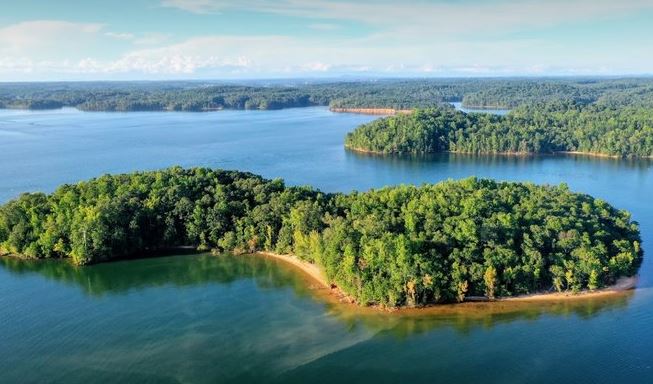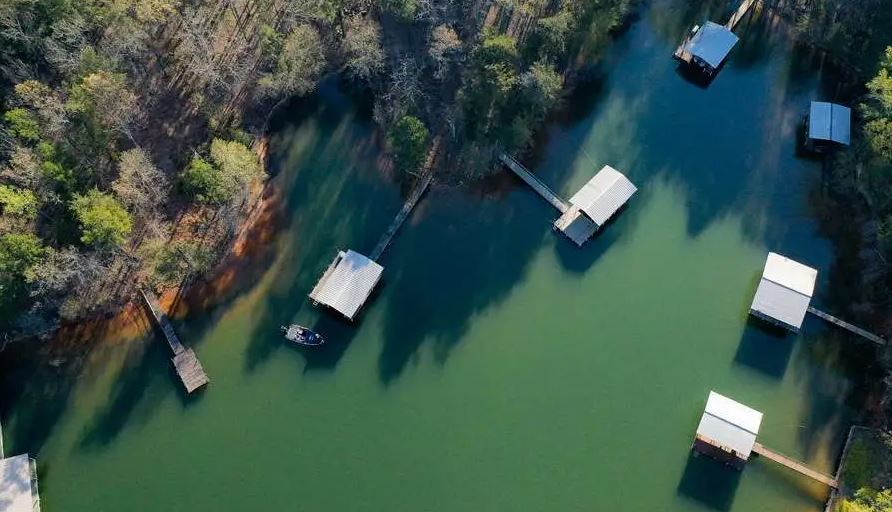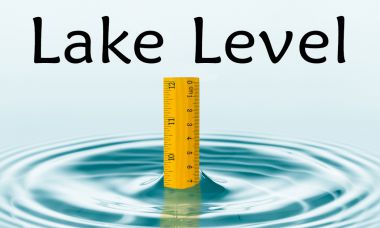Lake Hartwell Water Level: Everything You Need to Know
Lake Hartwell is a man-made reservoir situated on the border between Georgia and South Carolina, encompassing parts of the Savannah, Tugaloo, and Seneca rivers. It stands as one of the largest recreation lakes in the Southeastern United States. The reservoir was formed by the construction of the Hartwell Dam, which was completed in 1962, and it is located on the Savannah River, approximately seven miles (11 km) downstream from the confluence of the Tugaloo and Seneca Rivers, where the Savannah River is formed.
Stretching approximately 49 miles (79 km) up the Tugaloo River and 45 miles (72 km) up the Seneca River at normal pool elevation, the lake covers an area of nearly 56,000 acres (230 km2) with an impressive shoreline of 962 miles (1,548 km). The entire Hartwell “Project” comprises 76,450 acres (309 km2) of land and water.
The presence of I-85 bisecting Lake Hartwell makes the area easily accessible to visitors.
Have you ever wondered about the current water level of Lake Hartwell? Whether you’re a nature enthusiast, a fisherman, or just someone who enjoys spending time by the water, knowing the water level of this beautiful lake in the southeastern United States can be crucial. In this article, we will dive deep into the topic of “Lake Hartwell water level” and explore its various aspects. From its definition and basics to its purpose, use cases, and future possibilities, we will cover it all. So, let’s get started!

Lake Hartwell
Lake Hartwell is a man-made reservoir located in the states of Georgia and South Carolina. Created by the Army Corps of Engineers in the early 1960s, it serves multiple purposes, including flood control, hydroelectric power generation, recreation, and water supply. The water level of Lake Hartwell refers to the height of the water surface measured in relation to the lake’s full pool elevation.

Full Pool Elevation Lake Hartwell
The full pool elevation of Lake Hartwell is the maximum level that the lake is designed to reach. It is the benchmark against which the current water level is compared. The full pool elevation of Lake Hartwell is approximately 660 feet above sea level.
Basics
Understanding the basics of Lake Hartwell water level is essential for anyone who wants to make the most of their time on or around the lake. Here are the key points you need to know:
Current Water Level Updates
To stay informed about the water level of Lake Hartwell, you can check the updates provided by various official sources such as the US Army Corps of Engineers and the Lake Hartwell Water Levels website. These sources typically offer real-time or near-real-time data, ensuring that you have access to the most up-to-date information.
Measurement Units
The water level of Lake Hartwell is usually measured in feet above sea level. This unit allows for easy comparison of the lake’s water level with other geographical points of reference. Additionally, some sources may provide the water level in terms of the lake’s full pool elevation, providing a clear indication of how far above or below the lake’s maximum level it currently stands.
Purpose and Use Cases
The water level of Lake Hartwell serves various purposes and can be of great importance in numerous situations. Let’s explore some common use cases:
Flood Control
One of the primary purposes of Lake Hartwell is to help control flooding. By managing the water level, the Army Corps of Engineers can release excess water from the lake during periods of heavy rainfall. Monitoring the water level is crucial for efficiently regulating the flow and preventing potential disasters.
Recreation and Tourism
Lake Hartwell is a popular recreational destination, attracting outdoor enthusiasts from all over. The water level plays a significant role in determining the available water activities such as boating, fishing, and swimming. Knowing the current water level allows individuals and businesses to plan their recreational activities accordingly and make the most of their time on the lake.
Water Supply
The water level of Lake Hartwell also affects the supply of water to surrounding areas. By managing the lake’s water level, water authorities can ensure a steady and reliable supply of water for residential, agricultural, and industrial purposes. Monitoring the water level helps maintain a balance between water usage and replenishment.
Instruction and Explanation
Now that we understand the importance of monitoring the water level of Lake Hartwell, let’s explore how to access and interpret the information effectively.
Accessing Water Level Information
To access the current water level of Lake Hartwell, you can visit the official websites of the US Army Corps of Engineers or the Lake Hartwell Water Levels. These websites usually provide easy-to-understand graphs, charts, or numeric values illustrating the current water level and its deviation from the full pool elevation.
Interpreting Water Level Data
When interpreting the water level data, it’s crucial to understand the terms used and the context in which they are presented. For example, if the water level is above the full pool elevation, it indicates that the lake is currently holding more water than its maximum capacity. Conversely, a water level below the full pool elevation suggests that the lake is operating with a lower volume of water.
Examples
To give you a clear picture of how the water level of Lake Hartwell can impact different activities, let’s consider a few examples:
Boating and Water Sports
Imagine planning a day of boating and water sports on Lake Hartwell. Checking the water level beforehand allows you to assess whether it’s optimal for your activities. If the water level is too high, it may not be safe to navigate certain areas due to submerged hazards. On the other hand, if the water level is too low, it might limit the accessibility of certain boat ramps or marinas.
Fishing
For avid fishermen, knowing the water level is crucial for identifying the best fishing spots. Different fish species prefer specific water conditions, and the water level directly affects their behavior. By monitoring the water level, you can target areas where the fish are more likely to be active, increasing your chances of a successful fishing trip.
Professional Tips
To make the most of your experience around Lake Hartwell, here are some professional tips:
Be Prepared
Always check the water level before planning any activities on or around Lake Hartwell. Ensure your safety by understanding the current conditions and any potential hazards associated with the water level. Be prepared to adapt your plans based on the information you gather.
7.2 Monitor Weather Conditions
Keep an eye on the weather forecast, as it can impact the water level of Lake Hartwell. Heavy rainfall can cause significant changes in the water level, affecting both safety and accessibility. Stay informed to make informed decisions about your activities.
8. Common Issues
While monitoring the water level of Lake Hartwell seems straightforward, there are a few common issues to be aware of:
8.1 Inaccurate Data
In some cases, the available water level data may not be 100% accurate or may have slight delays in reporting. It’s important to consider these potential discrepancies while interpreting the information. If you notice inconsistencies, reach out to the official sources for clarification.
8.2 Unpredictable Changes
Water levels can change rapidly due to a variety of factors such as rainfall, downstream water flow, and dam operation. Unexpected fluctuations can occur, making it essential to stay updated with the latest information to ensure your safety and enjoyment.
9. Alternatives and Comparison
If you’re unable to access the official sources of Lake Hartwell water level information, there are alternative methods to consider:
9.1 Local Community
Engage with the local community around Lake Hartwell. Online forums, social media groups, or local fishing clubs might have members who regularly monitor and share information about the water level. Participating in these communities can provide valuable insights and real-time updates.
9.2 Mobile Applications
Various mobile applications exist that provide water level information for lakes and reservoirs. While they may not have data specifically for Lake Hartwell, they can give you a sense of how these apps work and their general reliability. Explore these applications, read reviews, and choose one that suits your needs.
10. Future Possibilities
Advancements in technology present exciting possibilities for the future of monitoring and utilizing Lake Hartwell water level data. Here are a few potential developments on the horizon:
10.1 Internet of Things (IoT) Integration
Imagine a future where sensors placed strategically around Lake Hartwell continuously monitor the water level and transmit real-time data using IoT technology. This integration could provide instantaneous updates and enable automated systems for flood control, water supply, and recreation.
10.2 Enhanced Visualization Tools
With the advancement of data visualization techniques, future applications and websites could offer immersive and interactive experiences. Users could explore historical water level trends, simulate the impact of different scenarios, and gain a deeper understanding of the lake’s dynamics.
In conclusion, being aware of the water level of Lake Hartwell is essential for anyone planning to engage in recreational activities, understand flood control efforts, or stay informed about the water supply. By utilizing the available resources and keeping up with the latest information, you can make the most of your time on or around Lake Hartwell. Stay connected, stay safe, and enjoy the beauty of this magnificent man-made reservoir.
Frequently Asked Questions
1. What is the current water level in Lake Hartwell?
The current water level in Lake Hartwell can vary, but it is generally updated and available on the official website of the U.S. Army Corps of Engineers. You can check the current water level at their website or contact the local dam authority for the most up-to-date information.
2. How does the water level in Lake Hartwell affect recreational activities?
The water level in Lake Hartwell plays a significant role in determining the availability and suitability of recreational activities. Higher water levels offer better conditions for boating, fishing, and swimming, providing greater access to various areas of the lake. Conversely, lower water levels may limit access to certain boat ramps, expose hazards, and make navigation more challenging.
3. Are there any regulations or restrictions in place related to the water level?
Yes, there are regulations and restrictions regarding the water level in Lake Hartwell. These measures are primarily directed by the U.S. Army Corps of Engineers to ensure the safety and management of the lake’s resources. They may include guidelines for navigating during low water levels, restrictions on construction or dock permits, and drought management protocols. It is advisable to check with the local authorities to stay informed about any current regulations.
4. Does weather affect the water level in Lake Hartwell?
Yes, weather has a considerable impact on the water level in Lake Hartwell. Heavy rainfall can cause the lake’s level to rise, while prolonged periods of drought can result in lower water levels. The U.S. Army Corps of Engineers closely monitors weather patterns and adjusts the lake’s water release accordingly to mitigate flood risks and maintain a balanced water supply.
5. Is the lake always open to the public regardless of the water level?
Lake Hartwell remains open to the public for recreational use, even during varying water levels. However, it is important to note that certain amenities, such as specific boat ramps or swimming areas, may be temporarily closed or limited due to safety concerns during extreme water level fluctuations. Visitors are encouraged to check local updates or contact the relevant authorities for any current restrictions or closures before planning their visit.


